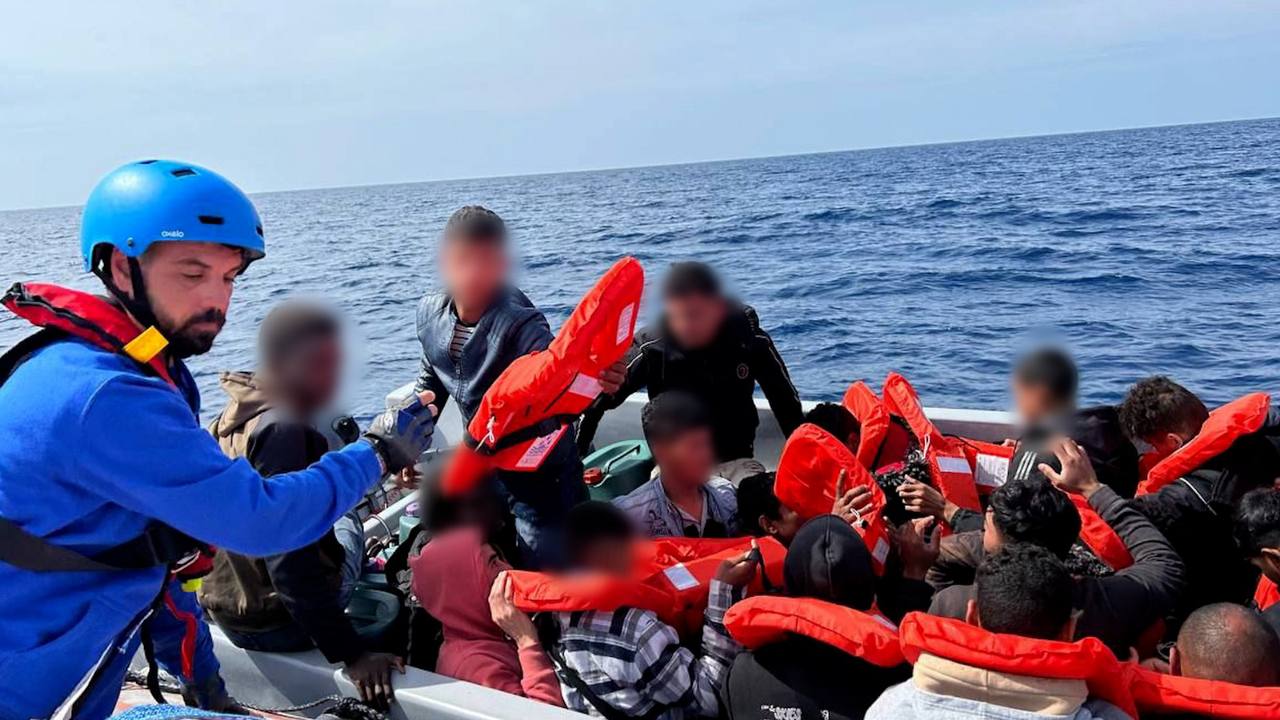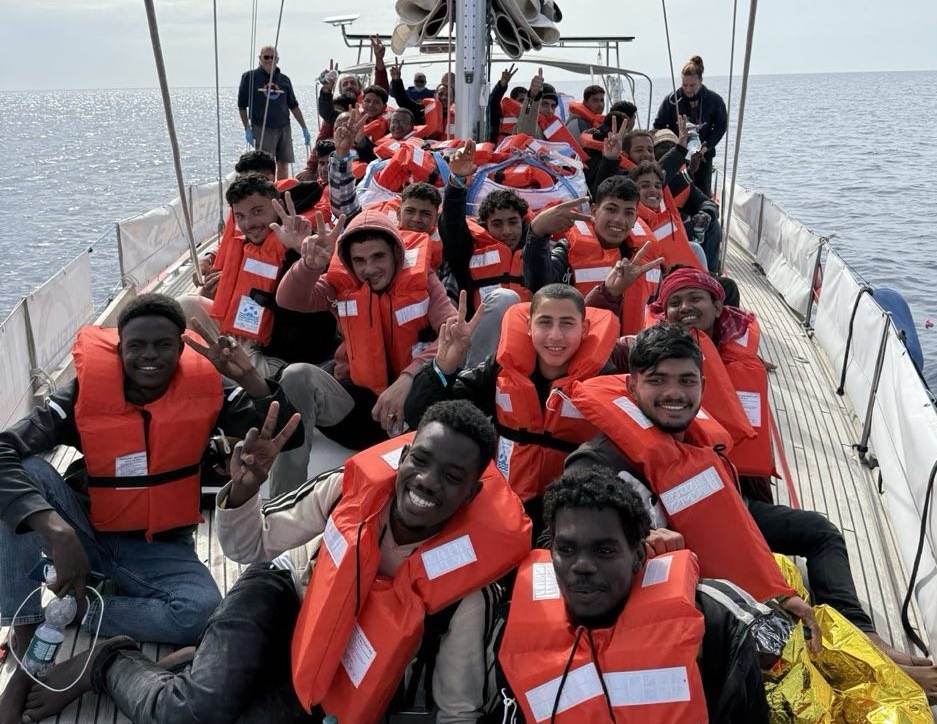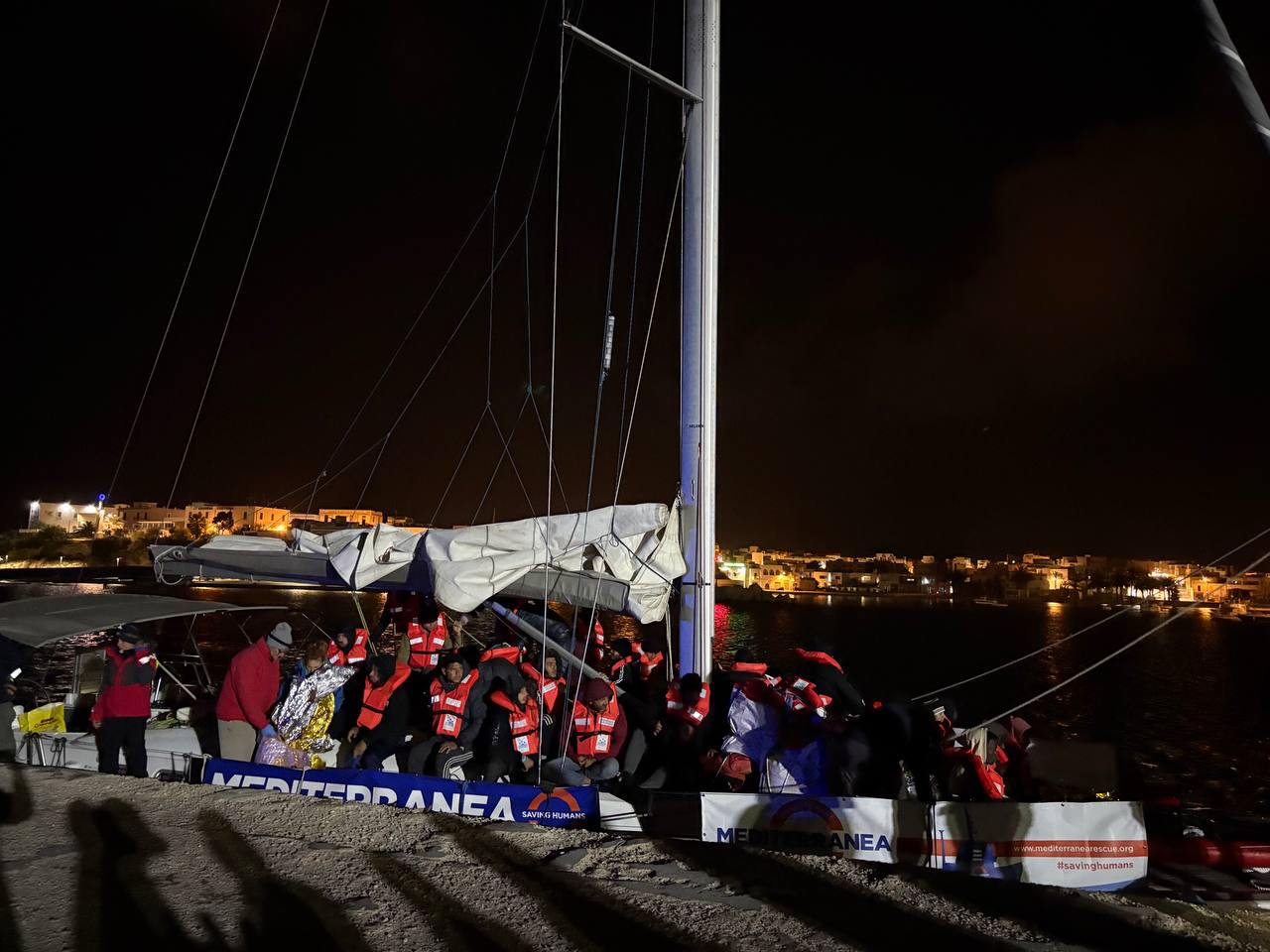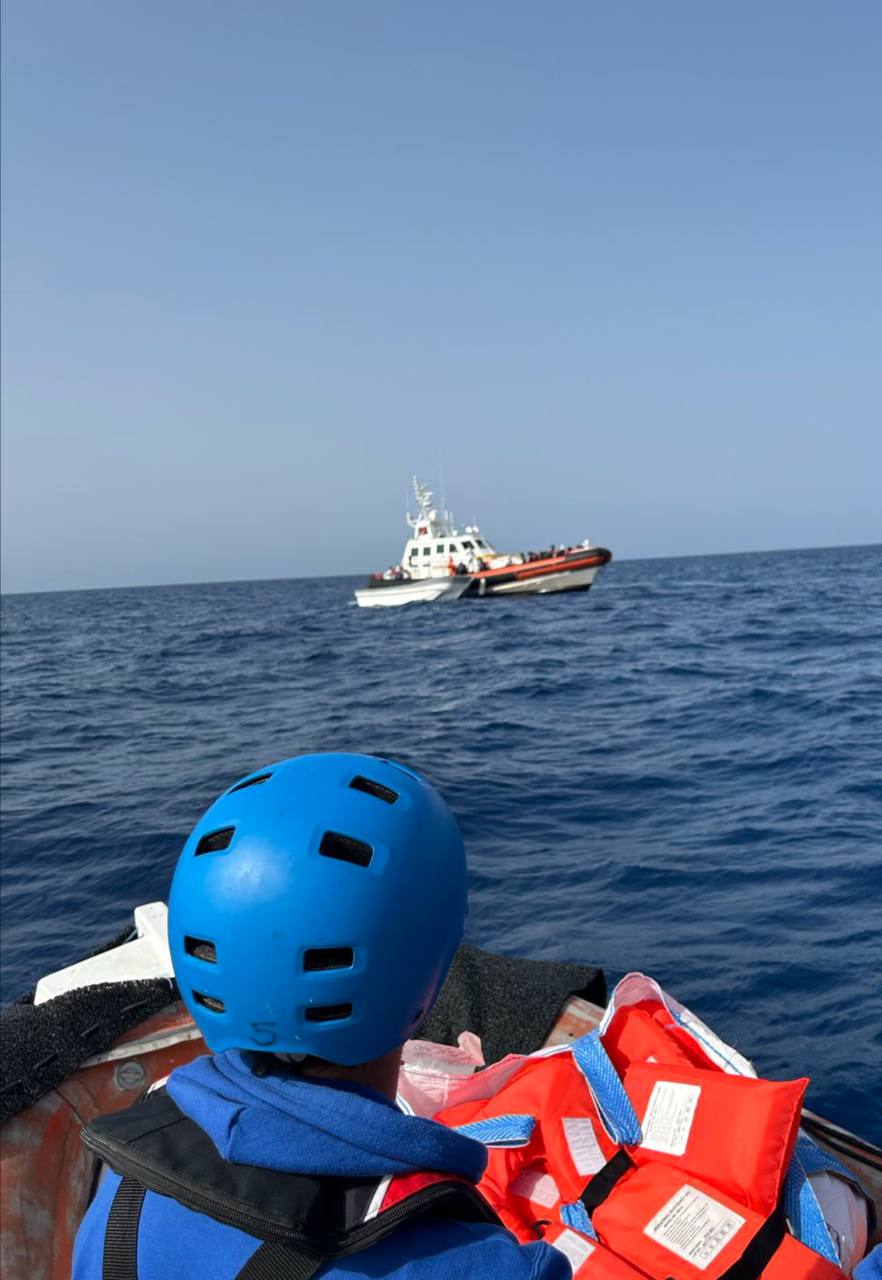With the return of the sailing vessel SAFIRA—today, Saturday, April 19, 2025—to its home port of Trapani, from which it had departed on the morning of April 2, #Mission21 of MEDITERRANEA Saving Humans has come to an end.
Over these three weeks, SAFIRA set out from Lampedusa to patrol the waters south of the island in observation and monitoring activities to defend the fundamental rights of people, ready to assist and, if necessary, rescue lives in danger at sea.
Safira directly intervened in two cases, helping 78 people during this mission.
First Rescue – April 6, 2025
Around 4:00 PM on Sunday, April 6, SAFIRA rescued 28 people (including 12 unaccompanied minors) who were aboard a fiberglass boat. They had departed from
Sabratha, Libya, fleeing the country, and were adrift after one of the two outboard motors caught fire.
The 28 survivors, originally from Egypt, Sudan, Bangladesh, and Morocco, were exhausted after spending 52 hours at sea. Following the recovery by our rescue team, onboard medics provided first aid, particularly for several cases of severe dehydration.
All rescued persons were then disembarked safely at Lampedusa, which had been designated as a Place of Safety by the Italian authorities, at 1:15 AM on Monday, April 7.

This rescue took place in the Maltese and Tunisian SAR (Search and Rescue) zone, 36 nautical miles southwest of Lampedusa, without any response from Tunisian authorities to our communications. The Maltese authorities, when contacted, explicitly refused to assist.
The vessel in distress had not been reported by anyone; it was sighted directly by our crew. Had we not intercepted it, it could have become yet another “ghost shipwreck.”
Earlier that day, at 8:45 AM, our crew had launched a search operation in the same area, during which they found debris from a wooden boat (floating yellow planks, likely parts of a wreck) and the lifeless body of a young Black man wearing a brown jacket. When SAFIRA approached to recover the body and provide an identity and dignified burial, the sea swallowed him. This discovery was immediately reported to the Coast Guard and IT MRCC (Italian Maritime Rescue Coordination Centre) in Rome for further investigation.


Our sailing vessel reached the reported location—between the Tunisian and Maltese SAR zones, more than 40 miles south of Lampedusa—and the rescue team provided immediate assistance to the drifting vessel.
The 50 people in danger were rescued and later boarded onto Italian Coast Guard vessel CP319, which disembarked them safely at Lampedusa in the evening. SAFIRA's crew remained on standby until the operation was completed.
The Role of the Civil Fleet
Mission 21 was shaped by two key factors:
1. Severely unstable weather and sea conditions, including three different storms in the Central Mediterranean—one of them cyclonic—bringing strong Scirocco and Libeccio winds and waves up to four meters high.
2. The extensive commitment of the Civil Fleet during this period. We cooperated at sea and in port with multiple assets.
In addition to the essential role played by Alarm Phone and Sea-Watch Airborne in identifying cases and observing from the air, we also collaborated with:
a. Aita Mari of Salvamento Marítimo Humanitario
b. The sailing vessels Nadir (ResQship), Trotamar III (Compass Collective), Daikini, Nihayet Garganey
c. The high-speed rescue asset Aurora SAR (Sea-Watch)
Meanwhile, large vessels like Humanity 1, Life Support, and Solidaire were being sent to disembark rescued people from the Libyan SAR zone in faraway ports: Genoa, Ravenna, and Ancona, respectively. Also, Sea-Eye 5, a fast unit from the German organization Sea-Eye, began operating south of the island.
The role of the Civil Fleet has been of critical importance, especially during a time when—despite challenging weather—dozens of precarious boats departed from Libya and Tunisia, and over 2,000 people managed to reach Lampedusa, either autonomously or through institutional and NGO-led rescues.

Libya and Tunisia are not safe countries
As we wrote on April 5th, setting sail from Lampedusa: “In Libya and Tunisia, every day, there is a hunt for migrants. Especially if they are black, Christian and/or belong to the LGBTQAI+ community. Roundups in the streets, deportations and abandonments in the desert, interceptions at sea, arbitrary detentions in prison camps, torture and extortion are the daily news, at the hands of regimes and militias that are the privileged partners of the Italian government and European institutions”.
Laura Marmorale, president of Mediterranea Saving Humans added: “in recent days, the forced closure in Tripoli of the activity of a dozen non-governmental organizations, as well as the interventions that repress humanitarian work in Tunis, demonstrate that Libya and Tunisia are countries that are anything but safe, from which hundreds of people legitimately try to escape, seeking protection in Europe”. Not to mention the over 600 people – according to data released by IOM, certainly underestimated – who have lost their lives in the Central Mediterranean since January 1 of this year.
“Our ship Mare Jonio is in the shipyard in Naples, but our response can only be: let’s go back to sea” explained Denny Castiglione, head of mission on board.
“We are witnessing: Libyan criminals and traffickers, wanted by international justice with impunity and protection, espionage against victims and witnesses, humanitarian activists and independent journalists, plans to deport migrants to third countries - concluded Marmorale - We are also going back to sea to testify that in our country humanity and solidarity are widely held values. And that, at sea as on land, no one can be left behind”.
Trapani, 22 April 2025
